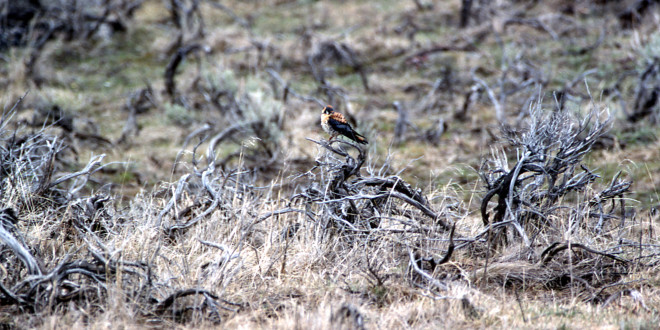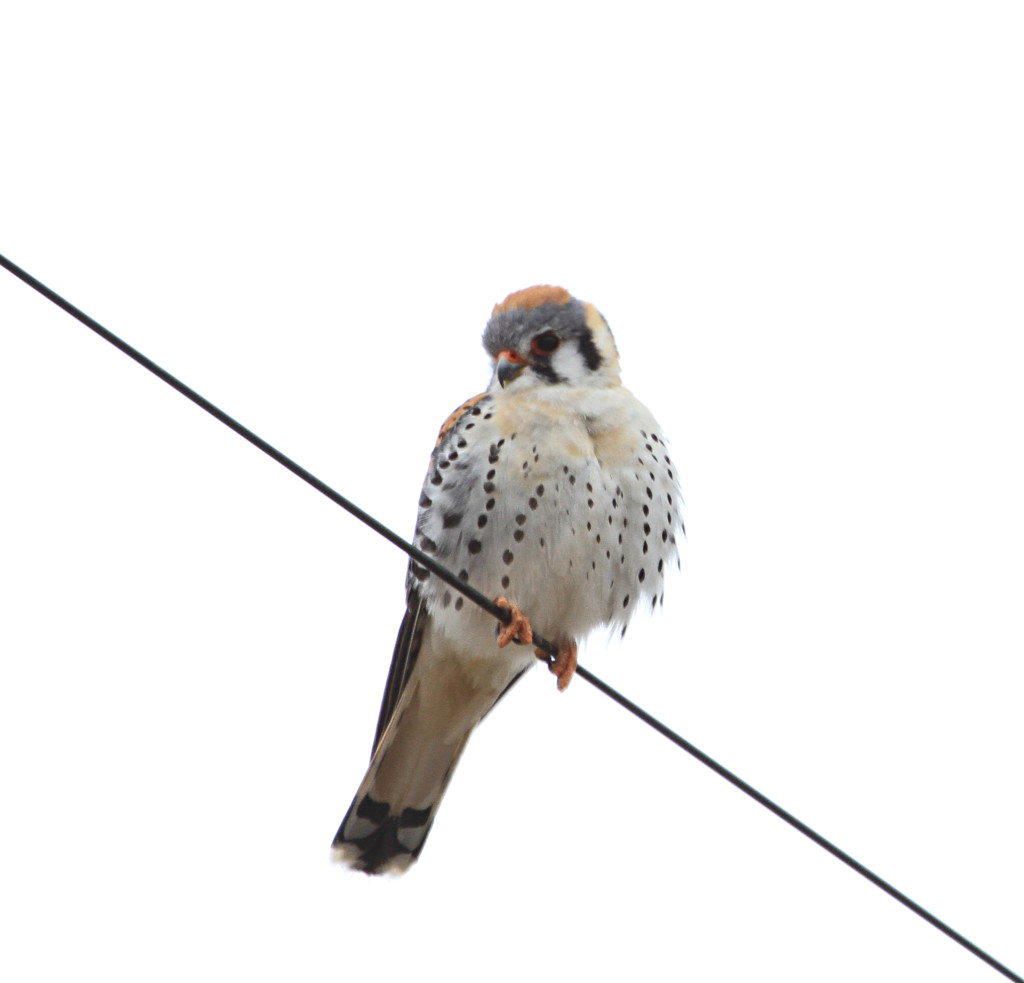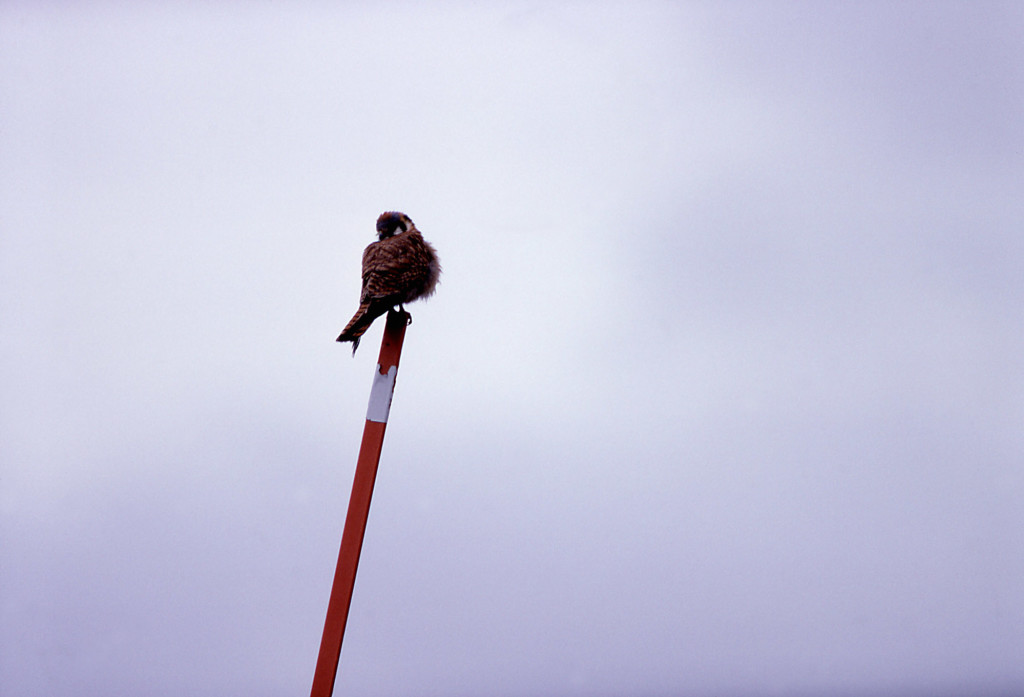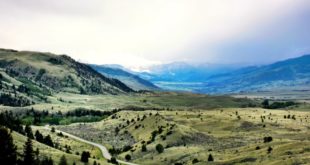In size they might resemble mourning doves, but in reality, American kestrels are anything but dovelike.
The smallest falcon in North America, American kestrels sort of straddle the divide between predator and prey.
On one hand, they live just like other raptors, hunting, soaring above a landscape, the poise and confidence associated with falcons. On the other hand, they themselves are sometimes prey to other, larger birds like red-tailed hawks, Cooper’s hawks, barn owls, even crows. They have even become prey of rat and corn snakes.
Unless you spot a nest (American kestrels nest in open cavities like tree hollows) the most common place you might see one of these birds would be from a high perch, like a telephone pole or post, or perched on powerlines, tail pumping, head bent.
American kestrels have a distinctive voice and two signature cries: klee-klee-klee! and killy-killy-killy!
You can see American kestrels year round in Wyoming and portions of Montana. In Yellowstone National Park, they are associated with the Yellowstone Raptor Initiative and the annual Hayden Valley Hawk Watch.
Basic Facts
- Scientific name: Falco sparverius.
- Sometimes called a sparrow hawk.
- Have rufous (reddish-brown) backs with black spots, tan chests, gray-blue wings and variegated heads.
- American kestrels are also distinguished by the black bands under and behind their eyes, sometimes likened to a “sideburn” and “mustache.”
- Not sexually dimorphic i.e. no notable differences in size between males and females.
- Measure 8.5 to 12.2 inches long.
- Wingspan measures 20-24 inches.
- Weigh between 3 and 6 ounces.
- Average lifespan (in the wild) is up to five years.
What’s In A Name?
- The word “kestrel” is derived from the Old French word crecelle, which was a medieval rattle.
- In modern French, the word is spelled crécelle, and American kestrels are called Crécerelles d’Amérique.
Habitat
- Historically, American kestrels preferred open woodlands.
- Have been known to live in meadows, grasslands, and deserts.
- Are also attracted to human-modified spaces like public parks, pastureland, farm fields, and even cities.
Range/Migration
- American kestrels are found throughout most of the continental United States year-round.
- Have also been found year-round throughout Mexico as well as South America, especially in Argentina and Brazil.
- Summer breeding can happen in Canada and as far north as Alaska.
- Have been known to winter in portions of Mexico.
Diet
- Feed on insects, small rodents, and songbirds.
- They will also eat small snakes and amphibians, or ambitiously large (for a kestrel) prey like red squirrels.
- American kestrels have been known to cache food in bushes, tree cavities, and rotted fence posts, in anticipation of bad hunts and the meddling of other scavengers.
Hunting
- American kestrels will hunt either by scanning from a perch or hovering above a field.
- Once sighted, a kestrel pounces, catching prey with one or two feet.
- Will sometimes eat especially small meals on the ground before ascending again.
- Otherwise, they will take larger prey up to a safe perch, away from other predators.
Nesting
- American kestrels nest in cavities such as tree hollows, spaces between rocks or boulders, and nooks in human buildings.
- Kestrels will also nest in boxes, like other small birds.
- Have been known to rout other cavity dwellers like bluebirds and red squirrels from their niches.
- The male searches for suitable cavities, but the female has final say over where to nest.
- If there is loose material in a cavity (such as the interior of a rotting tree) a female will dig out extra space.
- American kestrels will defecate on the walls of their nest, in order to prevent dirtying their chicks.
Courtship/Reproduction
- During courtship, females will fly slowly with stuff wingbeats, with wings just below horizontal.
- Males meanwhile will soar up high, cry klee! before diving, bringing food to the female as they fly as a demonstration of prowess.
- Kestrels start reproducing as early as one year of age.
- American kestrels lay four to six eggs.
- Eggs are quite small, measuring 1.2-1.5 inches long and roughly 1 inch wide.
- Coloring is white, yellowish, or reddish-brown, with gray, brown, and/or even violet-magenta mottling.
- Incubation lasts 28-31 days.
- Both males and females incubate eggs.
Young
- Young American kestrels are born more or less naked, with white down.
- Won’t start flying until 28-31 days after hatching.
- Females stay with young kestrels for first two weeks of life while male hunts.
- After that, young will be left alone while both their parents hunt for them.
- Young American kestrels are ravenous, devouring twice as much as adults do.
Sight For Sore Eyes
- American kestrels have the advantage of enhanced sight, befitting most raptors.
- They can also see ultraviolet light.
- This helps them spot urine trails, giving them a distinct advantage when searching for prey.
- To a kestrel, ultraviolet light shines like (to use the common simile) neon to a human eye.
 Yellowstone Insider Your Complete Guide to America's First National Park
Yellowstone Insider Your Complete Guide to America's First National Park








You must be logged in to post a comment.